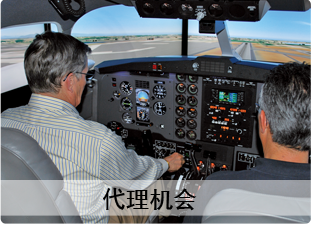2012年民航空管系统运行品质提升综述
CHINA’S AIR TRAFFIC IMPROVEMENTS OF 2012
2013-8-28 11:24
2012年,飞行起降架次同比增长9%,我国民航空管系统,又实现了一个安全年。空管系统全年共保障各类飞行起降714万架次,空管原因事故征候万架次为0.0014,远低于民航局规定的万架次0.10的安全目标;流量原因造成的航班延误占总延误的25.02%,同比下降2.1%
2012年,全年空管系统安全保障各类专机和重要飞行共计3406架次;空管系统设备正常率达到99.99%,完好率达到99.87%;重要天气机场预报准确率为85.87%,气象观测错情率为万分之0.05,京沪穗数值预报系统顺利投入业务化使用;妥善处理劫机、恐怖威胁、机械故障等返航备降航班900余起;空管设备国产化工作得到推进,装备公司和数据公司ADS-B地面站设备获得使用许可。
2012年,空管系统调整了广州白云机场等12个大型繁忙机场空域结构,日增起降时刻1200多个,通过排堵保畅和优化飞行程序等措施,全年累计缩短飞行距离1400万公里,减少二氧化碳排放约24万吨,节省燃油成本约5.4亿元,临时航线使用效率明显提高。
2012年,空管系统针对繁忙航路G212、A461、A593以及西安、成都、大连等繁忙地区开展排堵保畅专项工作,并制定了北京、上海、广州、深圳等七大机场的航班运行放行原则,有效缓解了这些地区的空中拥堵状况。
北京、上海、广州三地机场,三大区管中心分别实现了相关航路和机场的协同放行。航班平均延误时间和2小时以上延误次数明显减少。首都机场放行正常率提高了6%,出港航班平均滑行时间缩短6分钟;广州白云机场航班平均滑行时间缩短2.4分钟,出港航班关舱门后平均等待时间缩短8分钟。
同时,空管系统灵活使用航路航线和飞行高度层工作取得突破性进展,航空公司首次可以在计划阶段选择临时班机航线;8400米以上的高度层可供民航灵活使用;前30位机场可灵活选择主、备或临时航路航线。
此外,空管系统全面推行航空情报最新资料讲解服务机制,主动建立专门数据库和网站,对外航发布班机航线走向;完成WGS-84坐标测量后续工作;继续推进航空情报服务(AIS)向航空情报管理(AIM)的过渡。
民航局空管局在2012年系统规划各类空域,积极引导空域资源优化配置,组织完成了83个繁忙管制扇区的容量评估,并制定了全国管制扇区规划;在对15个国际机场实施PBN运行后,又完成了17个国际机场的PBN程序设计;完成了北京新机场预可研阶段空域规划方案与仿真评估、南苑机场扩容增量等专项工作。
2012年全年,空管系统先后开展了A461(京广)航路复线改造、G212(京昆)航路分流、A593(京沪)航路北端单向航线、B215航路优化等骨干航路调整,航路通行能力显著提升,其中,京广复线改造使京广航路湖南以北航段飞行流量降低了约6%;G212航路排堵保畅使昆明至北京方向航班正点率提升了22%,重庆至北京方向航班正点率提升了33%。昆明、济南、郑州等地的空域结构也做了大幅调整,缓解了飞行矛盾。其中,济南地区空域结构优化方案预计可满足未来5年~10年的空域运行需求。同时,民航局空管局先后完成了西安、郑州、长沙、武汉和厦门5个机场的进离场航线分流,并缩小了南昌和合肥进近管制区的雷达管制间隔。
此外,民航局空管局在全系统内继续推进高空空域整合。北京区管部分接管郑州高空管制服务,首次实现了北京、广州、上海三大区管中心的无缝隙高空空域对接。
The number of flight sorties in China showed a 9% growth during the year 2012, while logging another excellent safety year in the Civil Aviation Industry for the performance of its Air Traffic Management Team (ATM), and processing a total of 7.14 million sorties during that year. The incidents to flight sorties that were caused by the ATM during the year 2012 were 0.0014 per 10,000 sorties, which is much better than the 0.10 level accepted by the Civil Aviation Administration of China (CAAC). Among all flight delays, 25.02% were caused by flight and flow control; down 2.1% from the previous year.
China's ATM Team successfully supported 3,406 sorties during the year 2012, which included numerous types of aircraft, and high value flights. They achieved an on time flight rate of 99.99%, and a rate of 99.87% for sound control. The accuracy of the weather forecasts reported to airports reached a level of almost 86%, while the incorrect track record of weather and meteorological observations reached 0.05 per 10 thousand. The numerical weather prediction system (NWP) became successfully operational in Beijing, Shanghai, and Guangzhou. There were over 900 flights that were forced to be diverted as a result of hijacks, terrorist threats, and mechanical failures, and then subsequently handled with professional safety. The work of localized production of Air Traffic Management equipment was accelerated. The ADS-B ground station developed by China’s two state enterprisesreceived its certification to become operational.
In 2012, the ATM departments adjusted the airspace structures of 12 major airports, which included Guangzhou Baiyun International, increasing more than 1,200 landing times. By curbing air traffic congestion, clearing the airways, and optimizing flight procedures, flight distances have been shortened by 14 million km, carbon dioxide emissions were reduced by 240 thousand tons, 5.4 million yuan of fuel costs were saved, and the usage of temporary flight routes were enhanced.
In 2012, China's six ministries and commissions jointly issued a notice necessary on enhancing the preliminary work and construction management task toward the completion of the ATM’s Military and Civil Aviation project; while the CAAC and the Ministry of Finance jointly issued Interim Measures to the Administration of Finance toward the preliminary construction work on the most important facilities of Civil Aviation, which were both important approvals regarding the basic construction of the ATM system.
During the year 2012, Departments of the ATM curbed air traffic congestion for airways at G212, A461, and A593; the busiest regions of Xi'an, Chengdu, and Dalian, along with several others, which cleared those flight routes. The ATM also implemented new operation principles for seven airports located in Beijing, Shanghai, Guangzhou and Shenzhen, which efficiently relieved air congestion in those regions.
Airports in Beijing, Shanghai, and Guangzhou, along with three major regional control centers, have recently implemented the collaborative release mechanism for those airways and airports. That has significantly reduced the average delay time and relieved the status of delays of more than two hours. The current release time of flights from Beijing has improved by 6%, and the average taxiing time for outbound flights has been reduced by 6 minutes. The average taxiing time for flights at Guangzhou Baiyun International Airport has been reduced by 2.4 minutes, and the average waiting time after the flight door at the airport is closed has been reduced by 8 minutes.
There has also been a breakthrough in the development and usage of flexibility for airways, airlines, and flight levels. Each airline is permitted to use a temporary airway during the planning stage. The Civil Aviation Community is allowed to use flight levels above 8,400 meters, and the top 30 airports are now authorized the flexibility of using main, spare, or temporary airways and runways.
Furthermore, the ATM departments have been fully implementing the mechanism of interpretation of the newest aeronautical information by initiating a special database and website, for the purpose of releasing the trends of all flights. The ATM departments have also fulfilled the follow-up work after the WGS-84 co-ordinates had been measured, and have been accelerating the transition from the Aeronautical Information Service (AIS) to the Aeronautical Information Management (AIM).
The Air Traffic Management Bureau (ATMB) of the Civil Aviation Administration of China (CCAC) has created a systematic plan to classify the numerous varieties of airspace in China, and to aggressively guide the optimal allocation of the Nation’s airspace resources. The ATMB organized and finished the capacity evaluation for 83 of the Nation’s busy control sectors, and then created a program to improve those sectors. The ATMB implemented the PBN for China's 15 International Airports, and then finished the programming for the implementation of the PBN for 17 of China's International Airports. The ATMB not only accomplished the task of the airspace plan, the simulation, and the evaluation stage of the pre-feasibility study of the new Beijing Airport, they fulfilled the arduous task of expanding the capacity, and increasing the volume of the Beijing Nanyuan Airport.
The ATM departments successively implemented numerous adjustments to all of its major airways, including re-generation of construction at the A461, bypassing of the G212, conversion into one direction of the north end of the A593, and optimization of B215, greatly clearing each of those airways, and improving the capacity capability for a much greater volume of air traffic. Re-generation of construction on A461 reduced the flight volume north of Hunan by 6%, bypassing G212 increased flight regularity by 22%, and flight count between Chongqing and Beijing jumped by 33%. The airspace structures of Kunming, Jinan, and Zhengzhou, were judiciously adjusted, drastically relieving those areas of flight conflicts. The airspace optimization program should qualify Jinan capable of meeting its operation requirements in the next five to ten years. In addition to all of those improvements, the CAAC/ATBM successfully bypassed the approach/departure flights of five International Airports, including Xi'an Xianyang, Zhengzhou Xinzheng, Changsha Huanghua, Wuhan Tianhe, and Xiamen Gaoqi. The CAAC/ATMB has reduced the intervals of radar control between the approach areas of Nanchang, and Hefei.
Overall, the CAAC/ATMB has accelerated the high-altitude airspace integration within the entire General Aviation Community. The Beijing Area Control Center has assumed the control duties of the Zhengzhou area. Consequently, for the first time, the responsibility of high-altitude airspace is now completely under the Area Control Centers of Beijing, Guangzhou, and Shanghai.


























